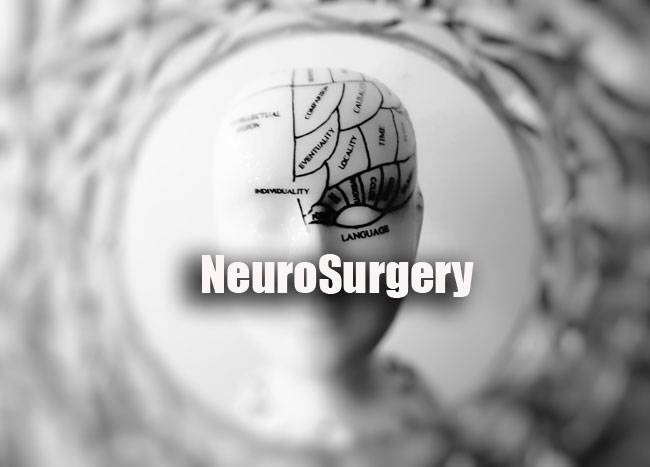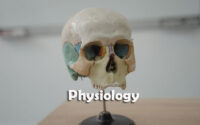Neurosurgery MCQ
Neurosurgery MCQ paper for the written examination is given below. Candidates who are looking for Neurosurgery exam MCQ paper can find in this section. The applied candidates who are getting prepared for the Neurosurgery can view this page for the Neurosurgery Last Ten Years MCQ Papers.

Download the Neurosurgery MCQ & Solutions & make it as a reference for your exam preparation. Take advantage of these Neurosurgery MCQ Papers in a proper manner to get qualifying Marks. Last 5 years Neurosurgery MCQ Papers provided here. Candidates who are applied for the above exam can check and download the Neurosurgery MCQ Papers from here.
MCQ on Neurosurgery
1. Which of the following avoided in Intracranial venous thrombosis?
(1) Dehydration
(2) Decongestents
(3) Heparin
(4) Antibiotics
2. Proximal internal carotid artery stenosis, best diagnosed by:
(1) DSA
(2) MR angiography
(3) Colour Doppler
(4) CT angiography
3. Most common site for peripheral aneurysm is:
(1) Popliteal artery
(2) Femoral artery
(3) Posterior tibial
(4) None
4. Which of the following vessel is in relation with Insular Cortex?
(1) MCA
(2) PCA
(3) PCOM
(4) Anterior choroidal artery
5. Cerebral perfusion pressure is:
(1) MAP + ICP
(2) MAP-ICP
(3) MAP—CVR
(4) MAP +CVR
6. After aneurysm rupture, Vasospasm occurs most commonly after:
(1) 21 days
(2) 4-14 days
(3) 21-28 days
(4) 3wks—3 months
7. Recurrent artery of Heubner is a branch of:
(1) Anterior choroidal artery
(2) ACA
(3) ACOM
(4) PCOM
8. SAH in lamina terminalis, location of aneurysm Is:
(1) MCA
(2) ACOM
(3) PCOM
(4) Basilar apex
9. A patient with severe headache with cranial nerve deficit belongs to which Hunt & Hess grade?
(1) Grade 2
(2) Grade 1
(3) Grade 4
(4) Grade 5
10. Regarding ACOQM aneurysm true statement all except:
(1) Proximal control via ipsilateral Al & contralateral Al
(2) Distal control via ipsilateral A2 & contralateral A2
(3) Remove Al before A2
(4) For symmetric Al used right sided approach
11. Payne’s point location:
(1) 3 cm up & 2.5 cm anterior to sphenoid ridge & 2.5 cm deep
(2) 2.5 cm up & 2.5 cm anterior to sphenoid ridge & 4.5 cm deep
(3) 4 cm up & anterior to sphenoid ridge
(4) 3 cm anterior & 3 cm superior to sphenoid ridge
12. Timing of surgery for Moya-Moya disease:
(1) Immediate after recent symptomatic event
(2) After 2 weeks of recent symptomatic event
(3) After 2 months of recent symptomatic event
(4) After 6 months of recent symptomatic event
13. Spetzier Martin Scale is used for:
(1) Aneurysm
(2) ICH
(3) AVM
(4) SAH
14. Most common Spinal AVM:
(1) Type2
(2) Type 3
(3) Type 1
(4) Type 4
15. Which type of Spinal AVM also known as AV fistulae?
(1) Type 1
(2) Type 2
(3) Type 3
(4) Type 4
16. “Triple H” therapy, H indicates all except:
(1) Hypertension
(2) Hypervolemia
(3) Hypothermia
(4) Hemodilution
17. Modified FISCHER grade 2 is:
(1) No IVH, focal /diffuse thin SAH
(2) Focal/ diffuse thick SAH, No IVH
(3) Focal / diffuse thin SAH with IVH
(4) Focal / diffuse thick SAH with IVH
18. In what ventricular structure is cerebrospinal fluid not produced by the choroid plexus?
(1) Roof of the fourth ventricle
(2) Floor of the third ventricle
(3) Lateral recess of the foramen of Luschka
(4) Temporal horn of the lateral ventricle
19. What deep cerebellar nucleus is located most laterally?
(1) Dentate
(2) Globose
(3) Fastigial
(4) Emboliform
20. What percentage of people have a balanced configuration of the circle of Willis?
(1) 5%
(2) 20%
(3) 40%
(4) 60%
| Practice Set | MCQs |
| Quiz | Questions and Answers |
21. What structure in the medial limbic circuit is the major output of the thalamus?
(1) Hippocampus
(2) Amygdala
(3) Fornix
(4) Cingulate gyrus
22. Damage to the anterior hypothalamus may cause what dysfunction?
(1) Obesity
(2) Cachexia
(3) Hypothermia
(4) Hyperthermia
23. Corpus striatum refers to what structures?
(1) Caudate and putamen
(2) Caudate, putamen and globus pallidus
(3) Putamen and globus pallidus
(4) Caudate and globus pallidus
24. What cistern contains the anterior choroidal artery, posterior cerebral artery, medial posterior choroidal artery, and basal vein of Rosenthal?
(1) Ambient
(2) Quadrigeminal
(3) Interpeduncular
(4) Crural
25. Where do climbing fibers originate?
(1) Vestibular nucleus
(2) Dentate nucleus
(3) Cerebellar glomeruli
(4) Inferior olivary nucleus
26. Which structure forms the roof of the temporal horn?
(1) Amygdala
(2) Hippocampus
(3) Tapetum
(4) Choroidal fissure
27. What is the arterial supply for the optic tract?
(1) Ophthalmic artery
(2) Anterior communicating posterior communicating and posterior cerebral arteries
(3) Posterior communicating posterior cerebral and anterior choroidal artcries
(4) Lateral posterior choroidal artery
28. Which tumor is associated with hydrocephalus and sudden death?
(1) Colloid cyst
(2) Glioblastoma multiforme
(3) Lymphoma
(4) Pilocytic astrocytoma
29. Multiple sclerosis is a contraindication to what procedural treatment for trigeminal neuralgia?
(1) Microvascular decompression
(2) Percutaneous radiofrequency rhizotomy
(3) Percutaneous glycerol injection into the Meckel cave
(4) Percutaneous balloon micro-compression
30. Deep brain stimulation in the setting of Parkinson disease is expected to result in brief minimal improvement to what characteristic of the disease?
(1) Dyskinesia
(2) Balance
(3) Tremors
(4) Rigidity
31. Injury to the subthalamic nucleus during a functional lesioning procedure classically produces what type of movement disorder?
(1) Myoclonus
(2) Hemiballism
(3) Pill-rolling tremor
(4) Chorea
32. What artery often is associated with hemifacial spasm?
(1) Posterior inferior cerebellar artery
(2) Anterior inferior cerebellar artery
(3) Superior cerebellar artery
(4) Posterior cerebellar artery
33. What incomplete spinal cord injury syndrome is associated with a poor prognosis for recovery and dissociated sensory loss?
(1) Central cord syndrome
(2) Anterior cord syndrome
(3) Brown-Sequard syndrome
(4) Posterior cord syndrome
34. Following resection of a low-grade oligodendroglioma, what is the next step in adjuvant therapy?
(1) Intravenous chemotherapy
(2) Focused radiation
(3) Whole brain radiation
(4) Intrathecal chemotherapy
35. What tumor often arises from the “roof” of the fourth ventricle?
(1) Ependymoma
(2) Juvenile pilocytic astrocytoma
(3) Choroid plexus papilloma
(4) Medulloblastoma
36. How does melanoma in the central nervous system respond to radiation?
(1) Melanoma is entirely radiation insensitive and should not be treated by radiation.
(2) Melanoma is mostly radiation insensitive but radiation may be somewhat effective.
(3) Melanoma is mostly radiation sensitive and radiation typically may be effective.
(4) Melanoma is entirely radiation sensitive and should be treated primarily by radiation.
37. What is the primary disadvantage of approaching a pineal region tumor using an infratentorial supracercbellar approach?
(1) Difficulty may be encountered navigating around the deep venous system.
(2) Morbidity may be associated with positioning.
(3) Visual deficits are likely.
(4) Seizures may be induced.
38. A 50-year-old woman presents to the hospital after a new onset of seizures. She describes headache and poor vision. Her family notes that her memory has been worsening, and she is becoming more confused. Neurologic exam reveals a loss of smell on the left side. Ophthalmologic exam reveals a pale left optic disk. The right optic disk is congested and edematous. What is her most likely diagnosis?
(1) Pituitary adenoma
(2) Posterior reversible encephalopathy syndrome
(3) Olfactory groove meningioma
(4) Brainstem cavernoma
39. The most common deficit associated with a corpus callosotomy is:
(1) Intracerebral hemorrhage
(2) Hyperthermia
(3) Memory problems
(4) Speech irregularities
40. In the adult patient, subdural effusions are associated with what entity?
(1) Chronic subdural hematomas
(2) Tuberculosis
(3) Syphilis
(4) Haemophilus influenzae meningitis
41. In the repair of peripheral nerve lesions with large gaps, the standard graft material is:
(1) Autologous anterior interosseus nerve
(2) Autologous sural nerve
(3) Silicone
(4) Cadaveric nerve
42. What is a contraindication to performing an anterior lumbar interbody fusion?
(1) Unilateral pars defect
(2) Bilateral pars defect
(3) Grade 3 or 4 spondylolisthesis
(4) Severe loss of disk space height
43. What is the most common location for dural arteriovenous fistulae to drain?
(1) Superior sagittal sinus
(2) Junction of the transverse and sigmoid sinus
(3) Cavernous sinus
(4) Inferior petrosal sinus
44. How much of the superior sagittal sinus can be sacrificed without a high risk of inducing venous infarctions?
(1) Anterior two thirds
(2) No more than one third of any portion
(3) Anterior one third
(4) Entire sinus as long as the cortical bridging veins are left intact.
45. What two veins provide immediate contributions to the vein of Galen?
(1) Anterior septal and thalamostriate veins
(2) Inferior sagittal sinus and internal cerebral vein
(3) Superior sagittal and straight sinuses
(4) Basal vein of Rosenthal and internal cerebral Vein



